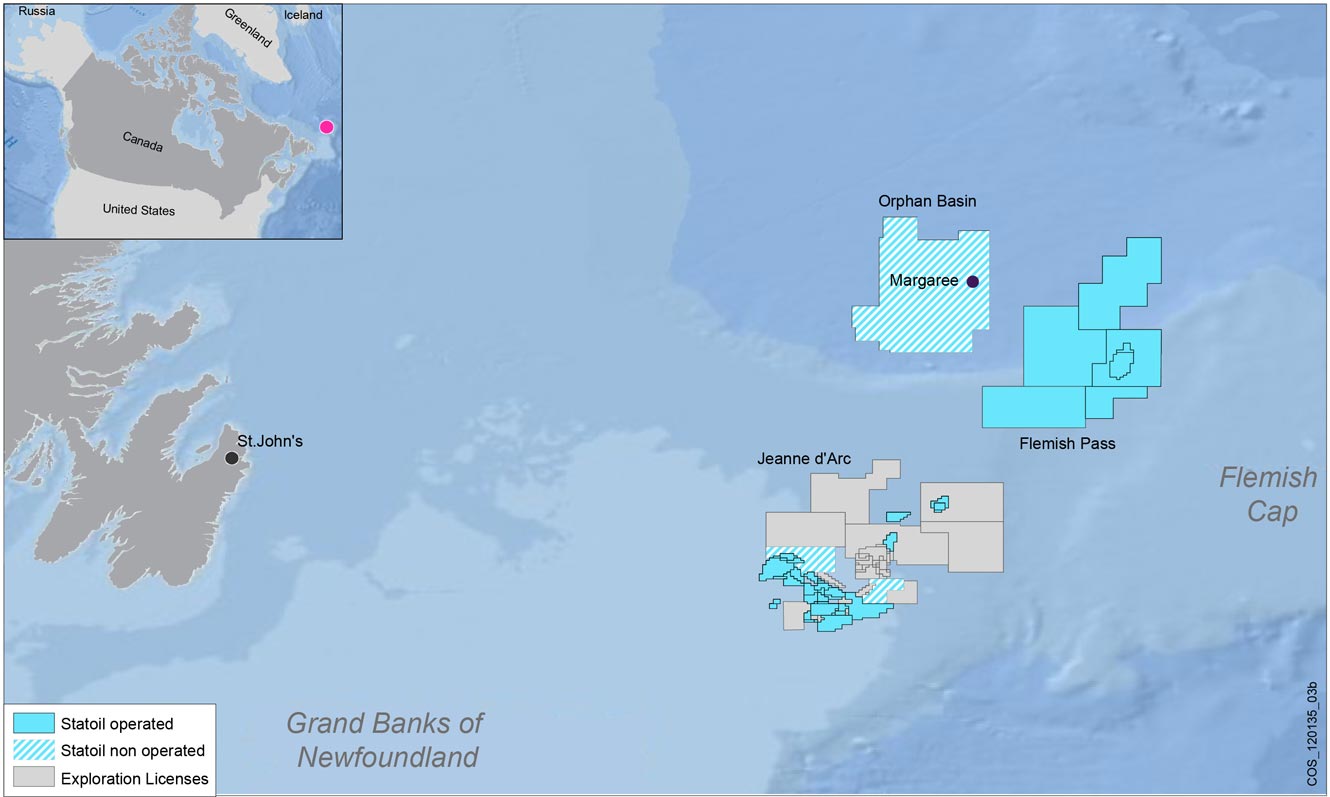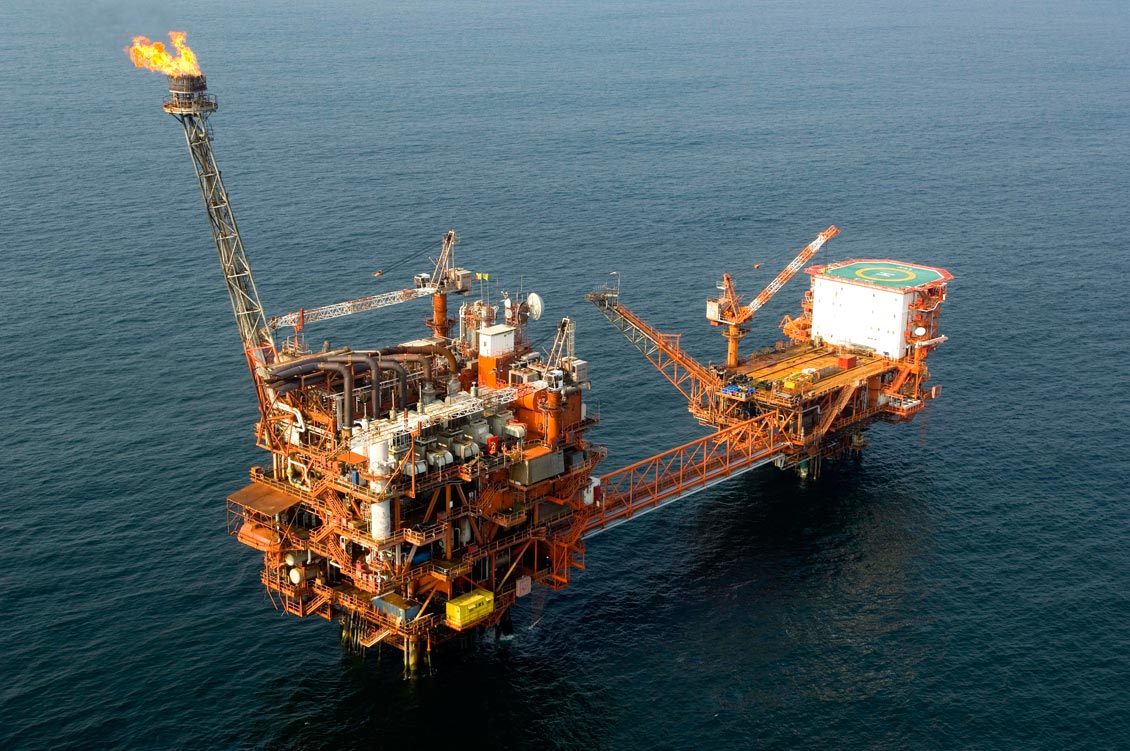CANADA: Statoil success points to core exploration area
While much detail has yet to be revealed, Statoil is evaluating its newfield wildcat Harpoon O-85, located in the deepwater Flemish Pass sub-basin (Grand Banks Basin) offshore Newfoundland, which it describes as a high quality oil discovery. The Harpoon well was drilled in a water depth of 1,100m at the far northern edge of block EL 1112, and 21.3 km south-south-east of the Mizzen O-16 oil discovery. This latter is estimated to hold between 100 and 200 MMbo.
Further appraisal drilling to mature the discovery is scheduled, as Statoil plans to build up this area as a core exploration region. According to Erik Finnstrom, senior vice president for Statoil in North America, it is too early to determine Harpoon’s resource potential but the result is very encouraging for the area and especially for the Bay du Nord prospect. Bay du Nord C-78 on EL 1112 is currently being drilled in 1,150m of water, targeting a tilted fault block with an objective in an Upper Jurassic age Tithonian sandstone.
The basin is a high-risk, high-reward exploration area that is mainly unexplored, but which contains very large, undrilled faulted anticlines. Prior to the Mizzen O-16 discovery, only two exploration wells and one delineation had been drilled during the past decade in the basin. The Mizzen discovery does not have enough recoverable oil to make production viable in the Flemish Pass but if Bay du Nord comes in, Statoil believes the finds are close enough together to give significant synergies. Such an outcome would move the company closer to achieving the goal of becoming a producing operator off Canada’s east coast. There is some confidence, as Finnstrom said the work the company has done so far “has pointed in the direction of a large petroleum system in the basin, not just an isolated limited system around Mizzen.”
INDIA: Deeper objectives success for Jubilant
 North Atharamura 1, the second exploratory well of the two well Phase-II minimum work program for the AA-ONN-2002/1 (Assam Shelf) onshore block, is ranked an important discovery by operator Jubilant Oil and Gas. Drilled to a total depth of 3,400m, two intervals were tested in the Miocene Bhuban Formation. The first test, conducted between 2,186m and 2,191m in Lower Bhuban Formation sandstones, flowed 3.2 to 3.8 MMcfgpd through a 32/64” choke. The second test, between 610–625m in Middle Bhuban Formation sandstones, flowed 1.7 MMcfgpd through a 24/64” choke. This is a significant result as the well targeted the hydrocarbon potential of the supra-thrust Middle Bhuban and Lower Bhuban sands and sub-thrust Lower Bhuban, Renji and Jenam sands and as such is the first exploratory well in the block targeting deeper objectives beyond the Middle Bhuban in the Atharamura anticline. Jubilant has identified significant exploration upside in this onshore block, including six leads with gross unrisked best estimates resources ranging from 82 Bcf to 1.4 Tcf. Jubilant holds a 20% participating interest in the block through its subsidiary Jubilant Oil and Gas Private Ltd., India, which is also the operator; GAIL India Ltd. holds the remaining 80%.
North Atharamura 1, the second exploratory well of the two well Phase-II minimum work program for the AA-ONN-2002/1 (Assam Shelf) onshore block, is ranked an important discovery by operator Jubilant Oil and Gas. Drilled to a total depth of 3,400m, two intervals were tested in the Miocene Bhuban Formation. The first test, conducted between 2,186m and 2,191m in Lower Bhuban Formation sandstones, flowed 3.2 to 3.8 MMcfgpd through a 32/64” choke. The second test, between 610–625m in Middle Bhuban Formation sandstones, flowed 1.7 MMcfgpd through a 24/64” choke. This is a significant result as the well targeted the hydrocarbon potential of the supra-thrust Middle Bhuban and Lower Bhuban sands and sub-thrust Lower Bhuban, Renji and Jenam sands and as such is the first exploratory well in the block targeting deeper objectives beyond the Middle Bhuban in the Atharamura anticline. Jubilant has identified significant exploration upside in this onshore block, including six leads with gross unrisked best estimates resources ranging from 82 Bcf to 1.4 Tcf. Jubilant holds a 20% participating interest in the block through its subsidiary Jubilant Oil and Gas Private Ltd., India, which is also the operator; GAIL India Ltd. holds the remaining 80%.
The Atharamura anticline is in Tripura state in north-east India and is bordered by Bangladesh to the north, south, and west, with the Indian tate of Assam to the east.
India is considering several options in its desire to boost gas production, and the urgency of the situation has been underlined by Oil Minister M. Veerrappa Moily, who has forecast a 5.7% decline in natural gas production in the year through March 2014 to 3.7 Tcf of gas a day. India’s falling gas production has badly hit consuming industries such as power and fertilizers.
CONGO: Major reserve boost
While Eni has so far declined to issue flow rates, the company believes it has made an important oil and gas discovery, having drilled two wells on the Nene Marine exploration prospect in the Marine XII Block, approximately 17 km from the coast. The company estimates the volume of the discovery proved so far to be around 600 MMbo, and 700 Bcf of gas in place. Perhaps more significantly, it has identified considerable additional upside that will be evaluated with further delineation wells.
The discovery was originally made through the Nene Marine 1 wildcat, which was drilled in 24m of water to a depth of 3,013m and abandoned in July 2012. The well encountered a significant wet gas and light oil accumulation in the pre-saline clastic sequence of Lower Cretaceous age. Nene Marine 2 was drilled two kilometers away from the discovery well and confirmed the significant hydrocarbon accumulation and the continuity of the reservoir. During production tests both the wells flowed commercial rates of 37° API oil. Eni operates Marine XII with a 65% interest and is partnered by New Age (Africa Global Energy) 25% and Société Nationale des Pétroles du Congo 10%.
The award to Eni of the Marine XII permit is part of an integrated project to develop the gas pote ntial of the country and guarantee the supply of 90,000 Mcfpd of gas over a 20-year period to a 300-450 MW gas-fired power plant near the Djeno terminal, as specified in a protocol agreement with Eni signed on May 17, 2006. The integrated project calls for total reserves of 700 Bcf and 20 MMb of condensat







